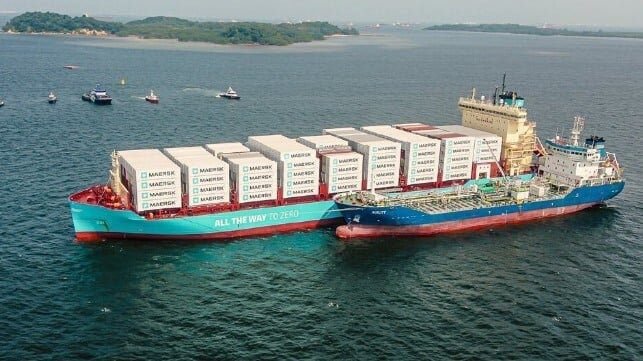The shipbuilding industry saw a significant increase in orders for alternative fuel-capable vessels in 2023, with nearly half of all newbuild tonnage on the world’s shipyard orderbooks being ready for alternative fuels. According to a year-end shipbuilding review from Clarksons, a total of 539 newbuild orders involved alternative fuel-capable vessels, accounting for 45 percent of all orders placed by tonnage. This marks the beginning of a vital fleet renewal investment program, with 49 percent of the current orderbook tonnage now being alternative fueled.
The proportion of alternative fuel-capable vessels is particularly high in certain segments of the fleet, with more than 80 percent of all boxships and car carriers ordered in 2023 being dual-fuel capable. LNG took the lead in alternative fuel ordering, accounting for 220 vessels, followed by 125 orders for vessels specified to use methanol, and four orders for vessels capable of burning ammonia. Additionally, other technological solutions, such as onboard carbon capture, are also gaining traction.
While the uptake of alternative fuel technology is increasing, it is still overshadowed by the commercial promise of high sulfur fuel oil. 420 existing ships installed scrubbers last year, allowing them to lawfully consume HFO and save about $200 per tonne on fuel. HFO-capable vessels now make up about 27 percent of global tonnage, with over 320 newbuilds ordered with scrubbers fitted last year.


















